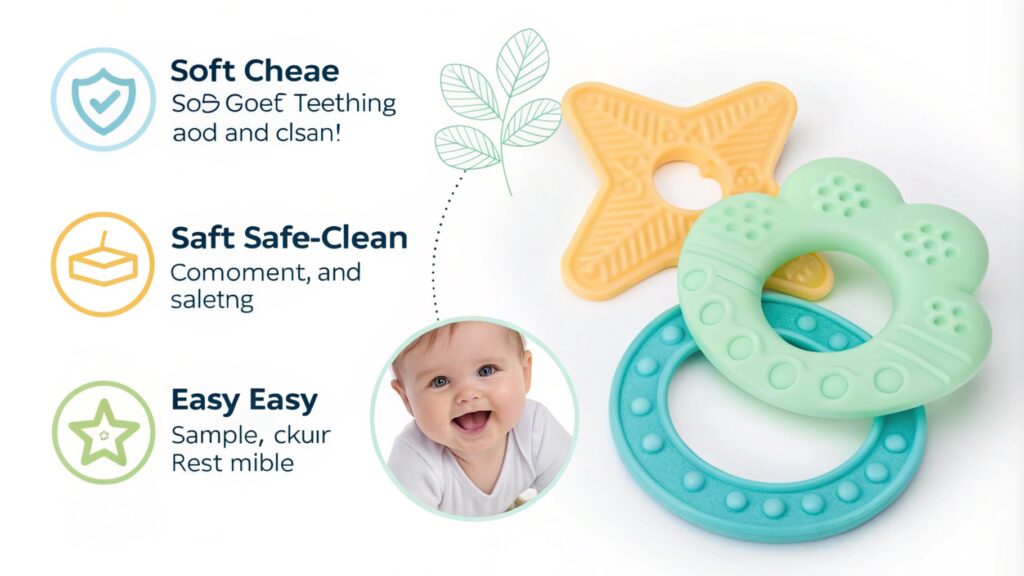
I see my baby’s irritated gums each day. I need a simple, safe tool. Silicone baby teethers can ease discomfort and help them learn to chew.
Silicone baby teethers are soft, safe, and easy to clean. They help soothe sore gums and guide babies through early teething stages. With proper use and cleaning, they can offer relief and comfort.
I remember holding my first silicone teether, feeling relief myself. I want to learn more about timing, safety, and care. I will explore these questions to help others feel confident choosing the right tools for their baby’s needs.
[Table of contents]
When can a baby start using a silicone teether?
I always wonder when my baby’s gums are ready for a teether. I check signs like drooling, gnawing, and fussiness. These can appear around 3-4 months old.
Most babies can try a silicone teether around 3-4 months, when they start drooling and chewing on hands. I look for these cues, then introduce a safe, soft teether.
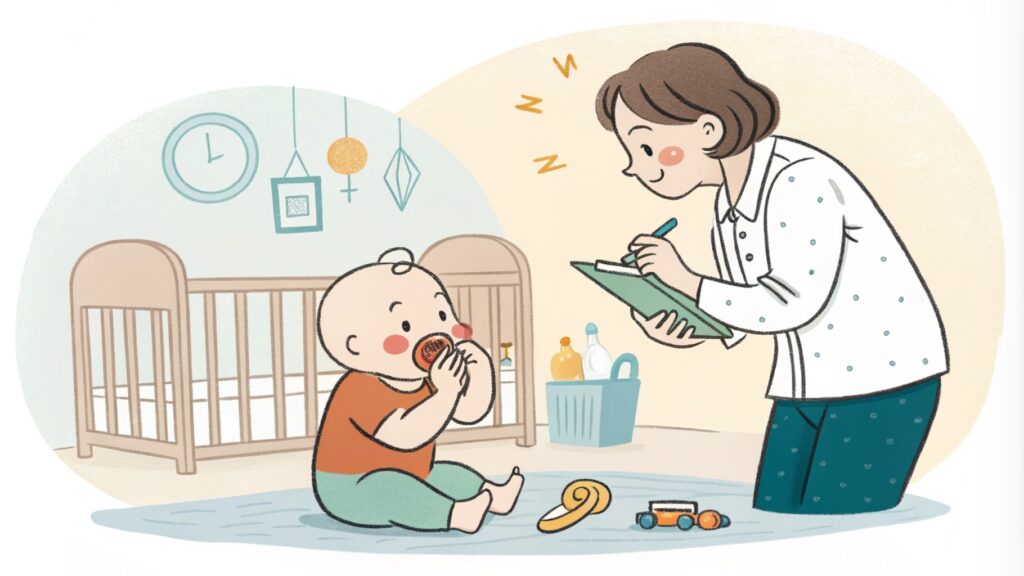
I consider my baby’s physical signs. At 3 months, I notice more drooling and gnawing. This does not always mean a baby needs a teether right away, but it can help. I think about general guidelines, but every baby is different. I also talk to my pediatrician if unsure.
Signs that show readiness
- Drooling
- Chewing on fingers
- Swollen gums
Common age ranges
Babies may begin teething between 3-6 months. Some start earlier, others later. I watch my baby’s behavior before introducing a teether.
| Age Range | Common Teething Signs | Possible Steps |
|---|---|---|
| 3-4 months | Drooling, mild fussiness | Introduce a soft teether |
| 4-5 months | Increased gnawing | Offer a chilled teether |
| 5-6 months | Visible gum swelling | Consider different shapes, textures |
I do not assume all babies follow the same schedule. I monitor closely and adjust accordingly. I trust my instincts and keep a close eye on how my baby responds. I do not force it if the baby shows discomfort. I use these simple guidelines to feel more confident in choosing the right time.
Is teether safe for baby?
I think about safety before handing my baby any teether. I check material, shape, and cleanliness.
Silicone baby teethers are safe if made from food-grade silicone, free of BPA, and regularly cleaned. I choose those with no sharp edges and follow manufacturing guidelines for sterilization.
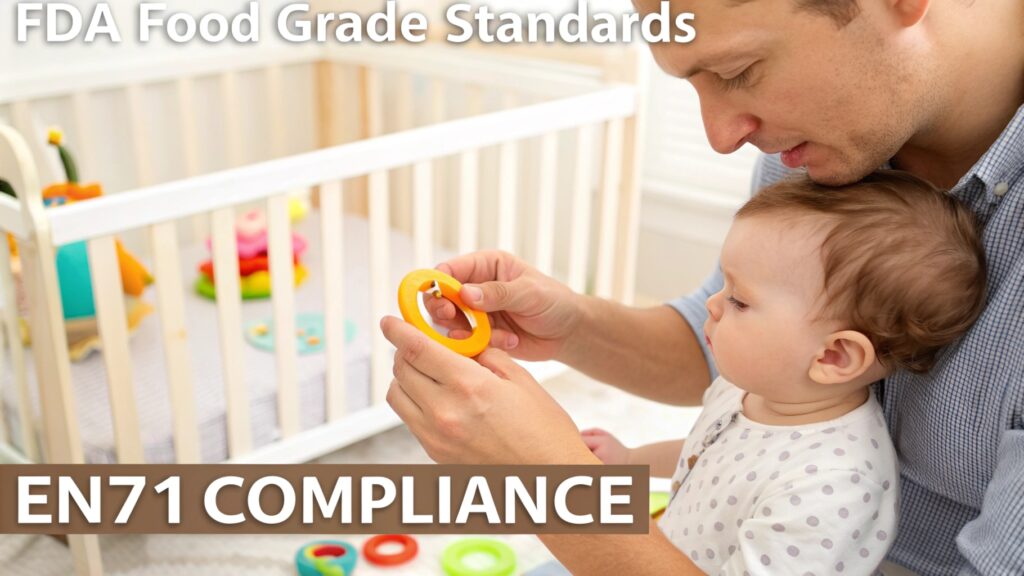
Safety matters. I choose silicone teethers that meet FDA food-grade standards. I also look for brands that comply with EN71 for toys and have tested materials. I avoid cheap knock-offs that might contain harmful chemicals. I always inspect for damages, cracks, or wear before giving it to my baby.
Key Safety Checks
- Choose reputable brands with certifications
- Inspect for damage regularly
- Clean and sterilize often
Compliance Standards
I know FDA standards ensure safe materials for food contact. EN71 ensures toy safety. LFGB ensures no harmful chemicals. These standards help me trust the product.
| Standard | Focus | Benefit |
|---|---|---|
| FDA | Food contact safety | Ensures non-toxic materials |
| EN71 | Toy safety | Ensures no sharp parts |
| LFGB | German food-grade | Ensures material purity |
I keep these standards in mind. I do not assume all products are equal. I pick carefully and remember that a safe teether helps my baby feel better, while I worry less.
Can baby teething at 3 months?
I wonder if my baby’s early fussiness means teething. Sometimes signs start as early as 3 months.
Yes, some babies show teething signs as early as 3 months. I watch closely for drooling, gnawing, and irritability.
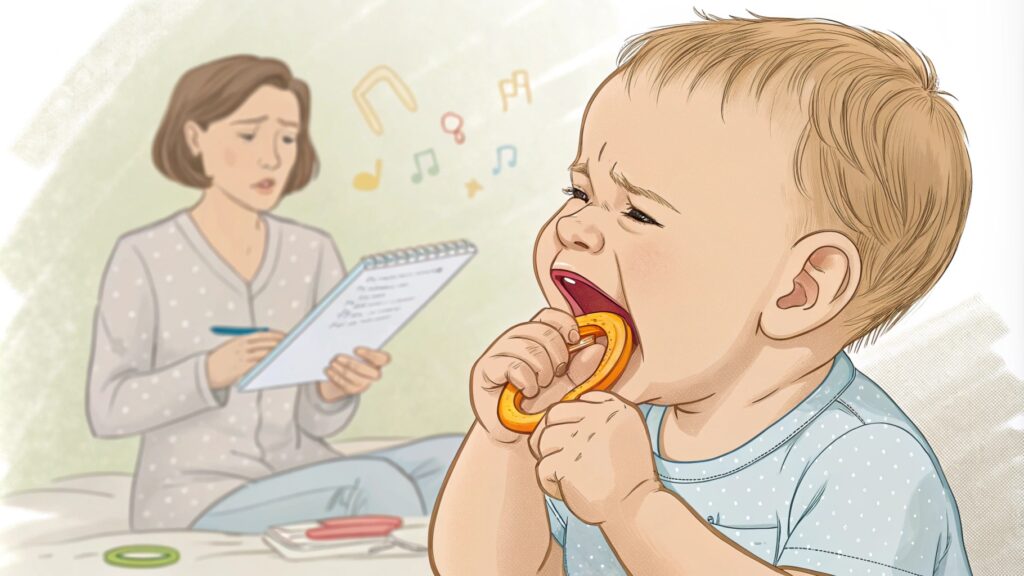
Early teething is not uncommon. I know babies develop differently. Some start drooling and gum sensitivity at about 3 months. I do not panic. Instead, I observe more. If my baby seems uncomfortable, I introduce a soft, well-made silicone teether. I avoid too-cold surfaces or rough materials that may irritate gums further.
Variation in Onset
Some babies teethe at 3 months, others at 5 or 6 months. I remember that there is no strict schedule.
Tips for Early Teething Babies
- Offer soft, gentle teethers
- Avoid extremes in temperature
- Keep the baby supervised
| Age | Likely Teething Stage | Suggested Aid |
|---|---|---|
| 3 months | Early gum sensitivity | Soft silicone teether |
| 4 months | Increased drooling | Chilled teether, massages |
| 5 months | Gum swelling, fussiness | Different textures |
I understand that early teething is normal. I trust my observations and adapt accordingly.
Is teether safe for baby?
I often ask myself again: are teethers safe? I know I must confirm safety before giving my baby any item.
Yes, safe silicone teethers help soothe gums. I choose reliable sources, ensure proper cleaning, and avoid any damaged or questionable products.
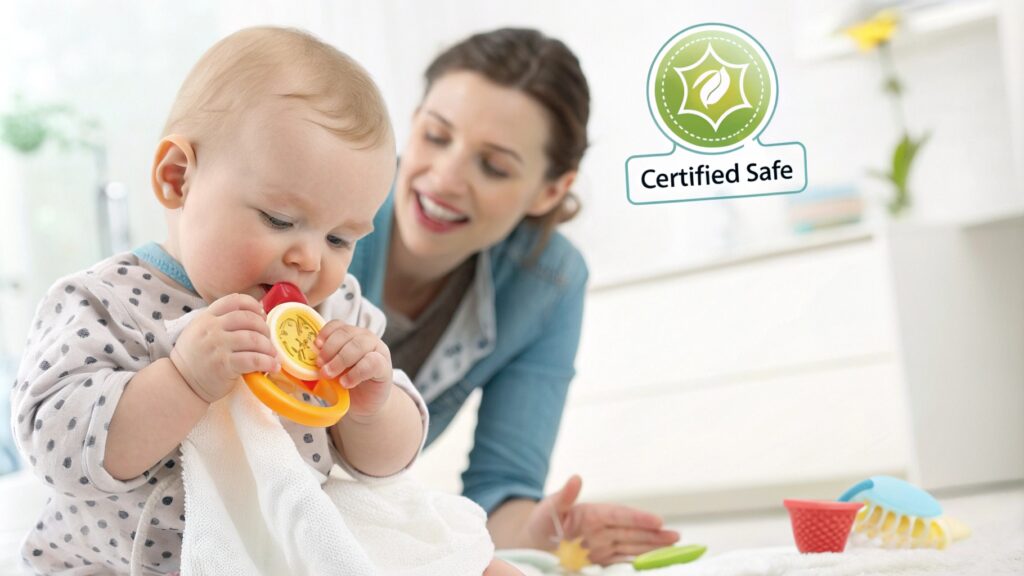
Even though I answered before, I want to be sure. Safety repeats as a priority. I understand that not all products are equal. Some have toxic chemicals or poor quality. I prefer certified silicone teethers with proven track records.
Double-Checking Safety
- Inspect materials
- Look for certifications
- Read reviews from other parents
Comparing Safe vs Unsafe
I know safe teethers meet standards, have no small parts that break off, and are easy to clean. Unsafe ones might be brittle, contain unknown substances, or have poor workmanship.
| Criteria | Safe Teether | Unsafe Teether |
|---|---|---|
| Material | Food-grade silicone | Unknown plastics |
| Durability | Stable over time | Cracks easily |
| Certification | FDA, EN71 | None |
I do not compromise. My baby’s comfort and health always come first.
How long does baby teething pain last?
Sometimes I see my baby fussing for days. I wonder how long this pain continues.
Teething pain varies. Some babies feel discomfort for a few days before a tooth emerges. I stay patient, soothe with teethers, and monitor progress.
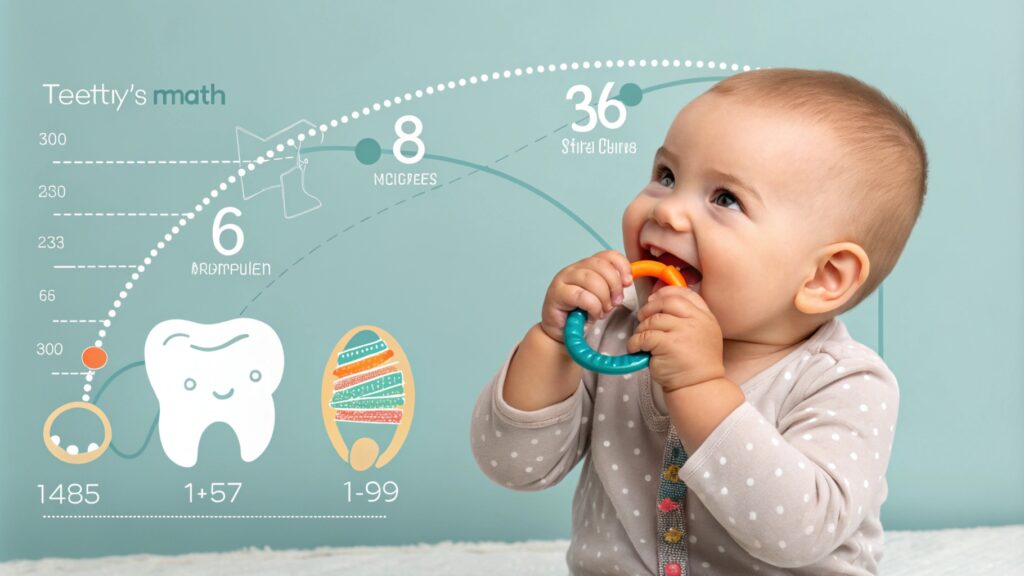
Teething does not follow a strict timeline. One tooth may cause a week of fussiness, while another emerges quietly. I do not panic if it lasts longer. I ask my pediatrician if concerned. Each tooth’s arrival might vary.
Factors Influencing Duration
- Individual pain tolerance
- Gum thickness
- Tooth size and position
Approaches to Ease Discomfort
I try simple methods first. I use soft silicone teethers to provide gentle pressure. I avoid harsh or frozen items that might harm gums. I stay calm and keep my baby comfortable.
| Pain Duration | Possible Reason | Suggested Action |
|---|---|---|
| 1-3 days | Normal tooth emergence | Offer a gentle teether |
| 3-5 days | Sensitive gums | Try chilled teether, consult doctor if severe |
| 1 week+ | Multiple teeth at once | Extra patience, possible advice |
I know patience helps. I remain flexible and responsive to my baby’s cues.
How to sterilize baby teething toys?
I care about hygiene. I always want to know how to keep my baby’s teether clean and germ-free.
To sterilize silicone teethers, I boil them briefly if instructions allow, or use warm soapy water, then rinse thoroughly.
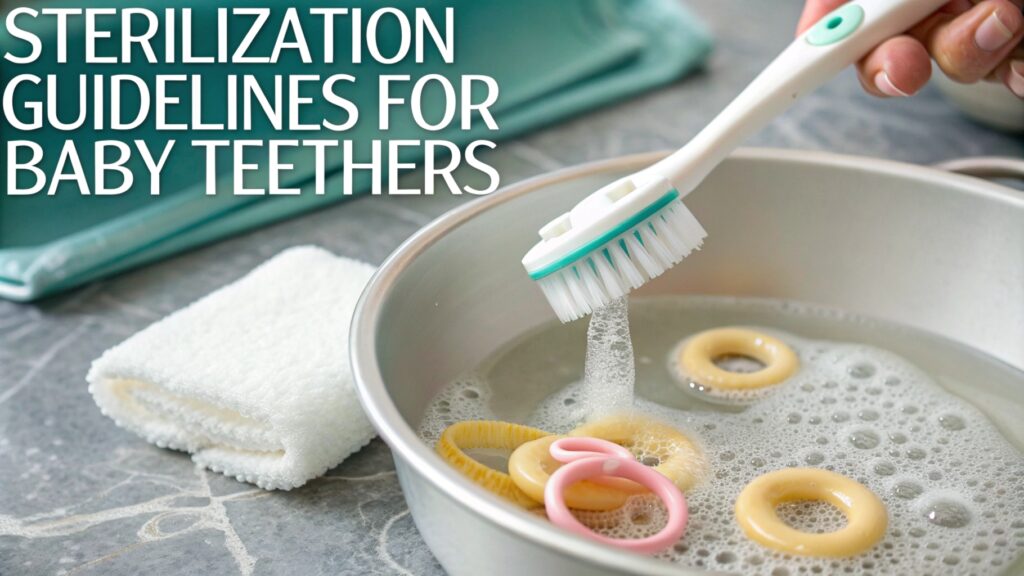
Sterilization is straightforward if I follow guidelines. Some teethers allow boiling for a few minutes. Others should not be boiled. I always read the manufacturer’s instructions. I consider mild soap, warm water, and a dedicated baby brush to clean crevices.
Methods of Sterilization
- Boiling water (if allowed)
- Dishwasher (if allowed)
- Hand wash with mild soap
Checking Manufacturer Guidelines
Not all silicone is the same. Some teethers resist heat better. Some might warp. I check product packaging.
| Method | Pros | Cons |
|---|---|---|
| Boiling | Kills germs effectively | Not all teethers withstand heat |
| Warm soapy water | Gentle and easy | Requires thorough rinsing |
| Dishwasher | Convenient | Not all are dishwasher-safe |
I stay flexible. I pick the method that works for my teether. I always test the integrity after sterilization, ensuring no damage.
What to clean baby teethers with?
I want to clean my baby’s teether properly. I choose simple methods and gentle, safe cleaners.
Use mild, baby-safe soap or unscented dish soap, warm water, and a soft brush. Rinse well and dry.
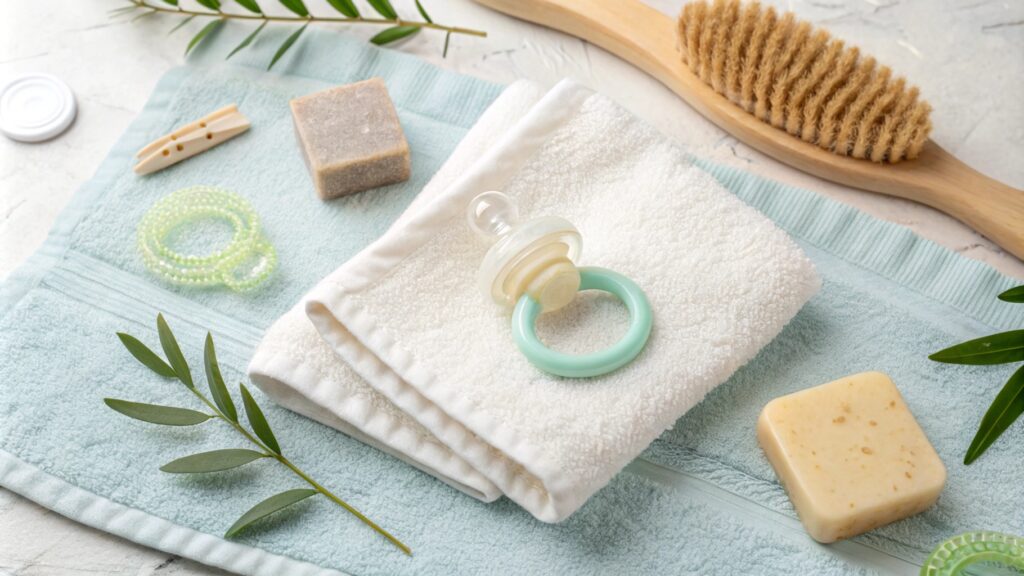
Cleaning does not need fancy products. I avoid harsh chemicals and bleach. Simple unscented dish soap works well. I remove all residues. I do not want strange tastes lingering. I use a soft brush that I dedicate only for baby items.
Recommended Cleaning Materials
- Mild soap
- Soft brush
- Warm water
Avoiding Harsh Chemicals
I never use bleach or strong detergents. Babies chew these items, so I keep it pure and safe.
| Cleaner Type | Safe for Baby? | Notes |
|---|---|---|
| Mild dish soap | Yes | Unscented is best |
| Harsh chemicals | No | May leave residues |
| Antibacterial wipes | Maybe | Check baby-safe label |
I maintain a simple routine. Clean often, rinse thoroughly, and pat dry. I keep things easy, safe, and consistent.
Conclusion
Silicone baby teethers ease discomfort, are safe when chosen and cleaned properly, and help babies through early teething stages. I trust simple methods, watch for signs, and stay patient.
